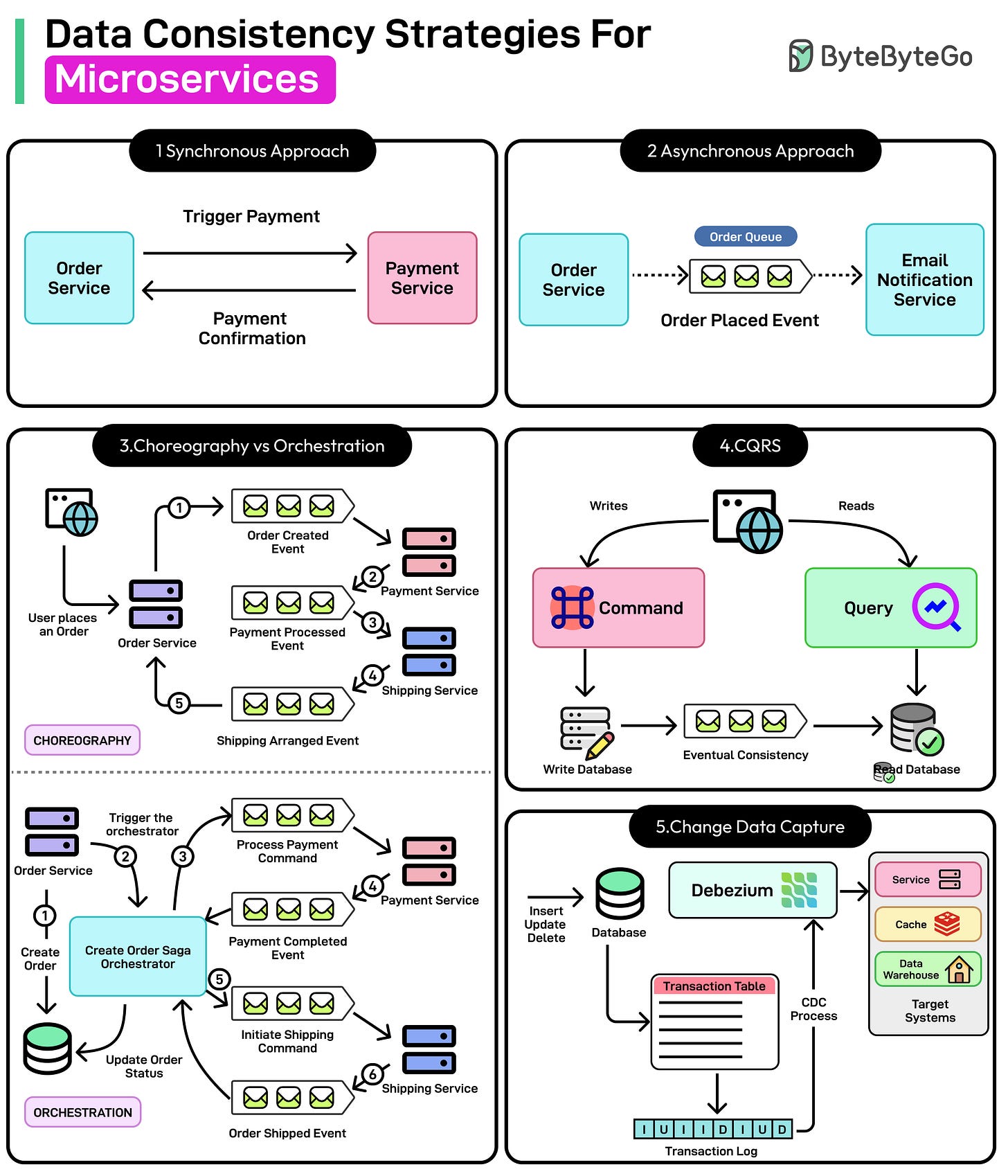Microservices architecture is a software design pattern where an application is built as a collection of small, independent services, each responsible for a specific function.
These services communicate with each other using APIs (Application Programming Interfaces) and operate independently, allowing for greater flexibility, scalability, and ease of maintenance. Think of a food delivery app with the following services:
The order service manages customer orders.
The payment service handles transactions.
The restaurant service updates menu availability.
The delivery service assigns and tracks deliveries.
Each service operates independently, allowing teams to update or scale them separately.
However, due to this separation, a major challenge with microservices is maintaining data consistency. In a monolithic system, all functionalities share a single database, resulting in consistent updates. On the other hand, microservices architecture advocates that each service should manage its database. While this is a good practice, it can lead to some scenarios such as:
Duplicate or Lost Data
Network Delays
Concurrency Issues
Understanding these scenarios is key to building robust, scalable applications using microservices. In this article, we will understand how data inconsistency can arise in a microservices architecture and various strategies to deal with it.
